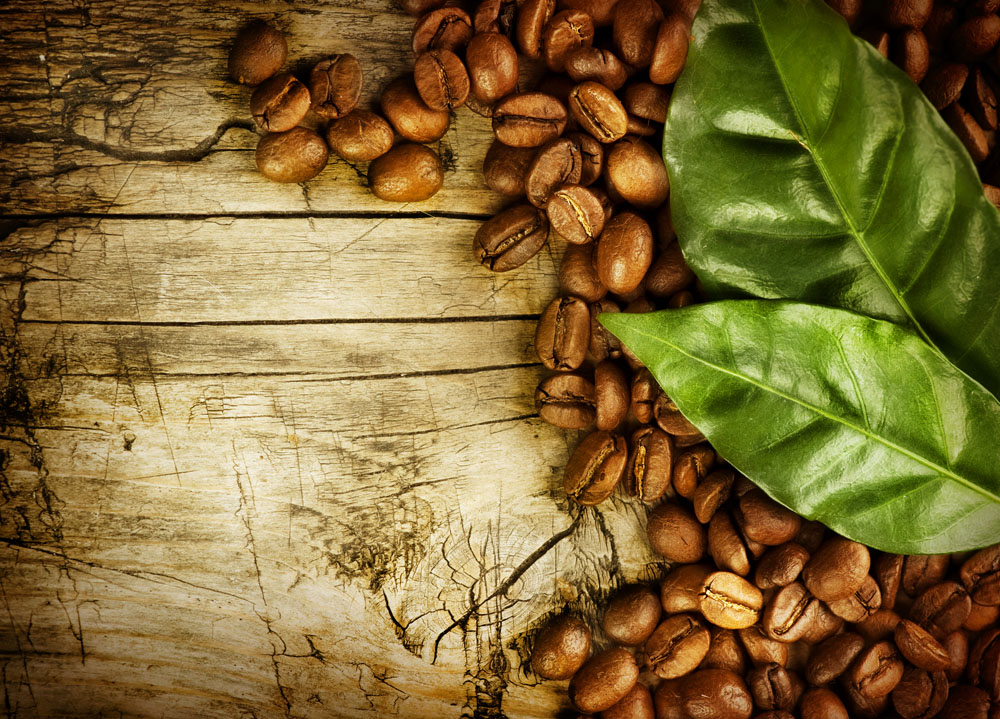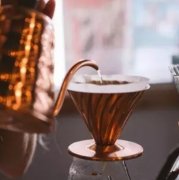Chinese Coffee Market and Yunnan Coffee Fine Coffee knowledge Yunnan coffee
Boutique coffee is fresh coffee. Whether it's food or drink, of course, the fresh the better, and so is boutique coffee. High-quality coffee should keep the coffee beans fresh before making, including the preservation of baked beans, and grind the coffee beans into powder before making, which is also to retain its original and best flavor. The way of making hand-brewed coffee is such a way to make high-quality coffee, and it is also one of the coffee-making methods that can best retain the original flavor of coffee.

Think about it, in fact, the coffee itself has not changed, what has changed is us. At that time, the coffee was made with an Italian espresso machine. But we don't care what kind of beans baristas use, let alone how baristas make coffee. At that time, baristas mostly used blended coffee. The quality of coffee is entirely determined by the roasting company. The bigger the brand of the roaster, the more products around it. No matter how old the coffee machine is and how cheap the beans are, as long as you see that the barista makes coffee for you, you will feel that you are drinking the best and most professional coffee.
Coffee trees need high altitude, tropical climate and fertile soil to grow the best coffee beans. Such climatic conditions on earth surround the equator, about between 25 degrees north latitude and 30 degrees south latitude. This zone, commonly known as the golden coffee belt, belongs to tropical and subtropical regions, and is technically called "coffee belt".
When it comes to coffee in the world, let's talk about Chinese coffee first. According to the above definition, although China is vast in territory and rich in resources, there are not many places where coffee can be grown. Apart from Hainan and Taiwan, parts of Yunnan, Guangdong and Guangdong, and the southern mountains of Fujian, what's more, agriculture is also a habit, so there is no soil for coffee in the land under the small-scale peasant economy. Although there are a lot of publicity materials about how much coffee is grown and how much coffee is produced in that place. Strictly speaking, the domestic coffee industry is almost as blank as it can be.
When it comes to Chinese coffee, we must first talk about Yunnan coffee. Overseas coffee development has experienced three waves of instant coffee in World War II, Starbucks and boutique coffee, while the development of coffee in China has experienced four waves.
Coffee in Yunnan began in 1892. French priest Tian de wanted to drink coffee but could not get it, so he brought some coffee seeds to the church of Zhukula Village Committee in Pingchuan Town, Dali, and began to grow the first coffee in China. Unfortunately, due to the inconvenient transportation, the coffee did not flow to more places, fortunately, because of the inconvenient transportation. After more than a hundred years, more than 1000 bourbon and Tibica have been handed down. Two years ago, I heard that people in the coffee industry are going to make a pilgrimage. Zhukula Village has been growing and grinding itself for a hundred years, and it should also be the dream of young people on the Bund in Shanghai after they have made money. It is not surprising that there is coffee but it is not popular in Yunnan.
Then, after a few decades, in the middle and later stages of the Anti-Japanese War, Yunnan became the rear area. A large number of rich overseas Chinese from Nanyang came to Yunnan with their anti-Japanese ideals and coffee, and went to coffee shops after production. I don't know which Wen Qing even wrote a word to the beautiful boss of the Vietnamese shop, "sad words of the old country, lazy makeup in southern Xinjiang, eyebrows and tears turning to the vicissitudes of the world, speechless." The coffee culture of this department is a little special, that is, when you stir-fry coffee, you add something else, such as cream (followed by a branch of white coffee. The overseas Chinese in Malaysia are idealists. If they have some money, they have to do something for this country, otherwise they will feel sorry for their ancestors. Later, in the early 1950s, this group of idealists went to Hainan, another coffee-producing place in China, to prosper, because Zhou Enlai said that the coffee in this place was better than that in other places, deceiving Hainan people into growing coffee for decades. Anyway, although the result is not good, at least this stage let the Chinese know that we can actually grow coffee.
Ten years ago, people began to call Yunnan coffee small grains of coffee. This Arabica hybrid named Katim was first introduced to China by Nestl é. Katim is not a variety with obvious style. Nestl é sells goods that are not special, so Katim, which has good resistance to rust and does not taste good, has been vigorously promoted in Yunnan. Yunnan's coffee price is still subject to Nestle's orders. On the other side of the Pacific Ocean, the same coffee variety has been promoted and named Colombia. Coffee trees all over the world are sick, but Colombia has become the second largest coffee industry in the world with this variety alone. It is said that the same people have different lives. It turns out that the same tree can also have different lives. Yunnan, Hainan and Vietnam are still growing coffee at the stage of reflection in the old era. Another branch of the story is that the Taiwanese introduced the same species of Yunnan to Alishan and worked hard for several years. Last year, they won awards every year in the test of boutique coffee cups, and last year they were the eighth in the world and the top in Asia.
When coffee is the same all over the world, you need to find something different.
Important Notice :
前街咖啡 FrontStreet Coffee has moved to new addredd:
FrontStreet Coffee Address: 315,Donghua East Road,GuangZhou
Tel:020 38364473
- Prev

Coffee flavor is most affected by the factor "mercaptan" to create deep-roasted and light-roasted coffee beans.
Boutique coffee (specialty coffee) is also called specialty coffee selection coffee. It refers to coffee made from a small number of raw beans with excellent taste grown in an ideal geographical environment. Depending on the special soil and climatic conditions in which they grow, they have outstanding flavor. After strict selection and classification, this kind of coffee is hard in texture, rich in taste and stylish.
- Next

Stirring and brewing method how to brew coffee by hand
The way of stirring and cooking is simple, common and cool. The main results are as follows: 1, in the steaming stage, the amount of water is the standard of direct water injection and stifling; however, if the initial amount of steaming is 50 grams (corresponding to 20 grams of powder), then the whole instantaneous water trend chart will be different; the amount of water injection in the steaming stage will determine the instant in the later stage of cooking.
Related
- Beginners will see the "Coffee pull flower" guide!
- What is the difference between ice blog purified milk and ordinary milk coffee?
- Why is the Philippines the largest producer of crops in Liberia?
- For coffee extraction, should the fine powder be retained?
- How does extracted espresso fill pressed powder? How much strength does it take to press the powder?
- How to make jasmine cold extract coffee? Is the jasmine + latte good?
- Will this little toy really make the coffee taste better? How does Lily Drip affect coffee extraction?
- Will the action of slapping the filter cup also affect coffee extraction?
- What's the difference between powder-to-water ratio and powder-to-liquid ratio?
- What is the Ethiopian local species? What does it have to do with Heirloom native species?

